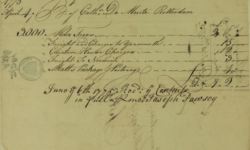Dutch alders from Rotterdam for Audley End – part 1

Een bijzin in een publicatie over Lancelot Brown, met betrekking tot zijn werk op Audley End, leidde tot een speurtocht in Rotterdamse en Britse archieven. Dit is deel één van het resultaat.
Een bijzin in een publicatie over Lancelot Brown, met betrekking tot zijn werk op Audley End, leidde tot een speurtocht in Rotterdamse en Britse archieven. Dit is deel één van het resultaat.




